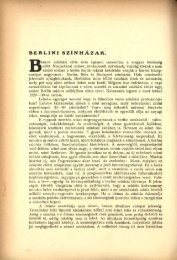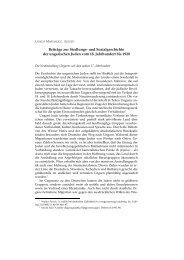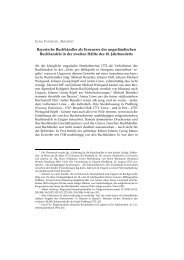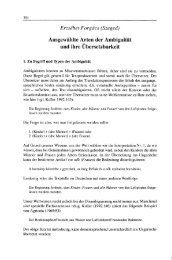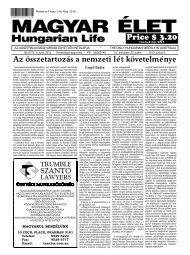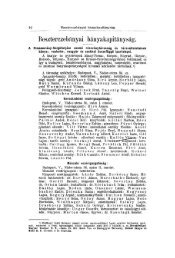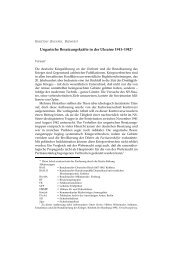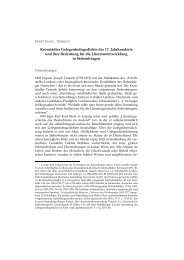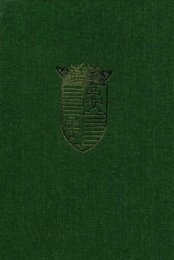Journal of Eurasian Studies - EPA
Journal of Eurasian Studies - EPA
Journal of Eurasian Studies - EPA
Create successful ePaper yourself
Turn your PDF publications into a flip-book with our unique Google optimized e-Paper software.
July‐September 2010 JOURNAL OF EURASIAN STUDIES Volume II., Issue 3.<br />
_____________________________________________________________________________________<br />
The news <strong>of</strong> these executions was first presented to the world by Germany in the spring <strong>of</strong> 1943, but<br />
the Red Cross was not willing to examine the situation, so the Germans set up an international<br />
commission for the clarification <strong>of</strong> the events. The famous Hungarian pathologist pr<strong>of</strong>essor, dr. Ferenc<br />
Orsós was a member <strong>of</strong> this commission, and he was declared later a war criminal. Moscow put the guilt<br />
<strong>of</strong> the executions in Katyn on the Germans, but the event was not part <strong>of</strong> the trial in Nürnberg. The Soviet<br />
<strong>of</strong>ficial statements tried to falsify the events that happened in Katyn during the war. After 1945, in Poland<br />
it was prohibited to talk about the executions that happened in Katyn. Only in 1956, at the time <strong>of</strong> the<br />
so‐called meltdown, seemed possible that the Polish community can find out something about the stories<br />
<strong>of</strong> the victims, but Wladyslaw Gomulka, the leader <strong>of</strong> the party, was afraid <strong>of</strong> Moscow’s revenge, and<br />
backed down. The silence was broken finally by Mihail Gorbachev in 1990. He made an announcement in<br />
which he said that the Soviet Union was responsible for the executions that happened in the woods <strong>of</strong><br />
Katyn. Two years later Boris Yeltsin gave to Lech Walensa copies <strong>of</strong> many important documents about<br />
Katyn, one <strong>of</strong> them <strong>of</strong> the decision <strong>of</strong> the party dated March 5, 1940 in which Stalin agreed to the<br />
executions <strong>of</strong> the Polish <strong>of</strong>ficers.<br />
Things are not in their right place even in our days. 1 Vladimir Putin, in spite <strong>of</strong> the documents and<br />
evidence that were presented, is doubtful that the Soviets killed Polish prisoners in Katyn in the spring <strong>of</strong><br />
1940. Hearing about the Wajda movie, some papers in Moscow say the same thing. The Russian military<br />
prosecutor’s <strong>of</strong>fice started an investigation <strong>of</strong> this matter at the beginning <strong>of</strong> the 1990’s, and this<br />
investigation was closed only in 2004. The documents <strong>of</strong> the prosecutor’s <strong>of</strong>fice – in spite <strong>of</strong> Putin’s<br />
opinion – do not question the fact that the Soviets executed the Polish <strong>of</strong>ficers and the civilians in Katyn,<br />
but they claim that that was not a crime <strong>of</strong> war and against humanity, but an ordinary crime. The exact<br />
number <strong>of</strong> the victims will be never known, and there is strong evidence that Moscow destroyed many<br />
documents related to this event in 1959. According to the research up until now 14,736 Polish <strong>of</strong>ficers and<br />
more than 10,600 Polish civilians were executed by the NKVD in Katyn.<br />
This execution had two Hungarian victims as well. One <strong>of</strong> them was born in Poland in 1897, he was<br />
Hungarian‐born, Oskar Rudolf Kuehnel. He fought against the Nazis as senior captain <strong>of</strong> the Polish<br />
army. He was imprisoned by the Soviets and sent to a camp in Koselski by the NKVD. He was murdered<br />
in April 1940 in the woods <strong>of</strong> Katyn. His body was exhumed in 1943. In his uniform they found his<br />
personal belongings and his journal, and the last date registered was April 7, 1940. The other Hungarian<br />
victim was Emánuel Aladár Korompay, born in Budapest in 1890, captain <strong>of</strong> the Polish army, who fought<br />
in Galicia during World War I. After the war he did not return to Hungary, but he joined Jozef Pilsudski’s<br />
legion and defended the Polish homeland from the Red Army in 1920. He graduated from the Reformed<br />
School; got a degree in philosophy from the University <strong>of</strong> Budapest; then he settled in Warsaw. He is<br />
considered as a pioneer <strong>of</strong> Hungarology in Poland and he was the editor <strong>of</strong> the first Hungarian‐Polish<br />
dictionary. He worked at the University <strong>of</strong> Warsaw as a lecturer and in the same time he was the cultural<br />
attaché <strong>of</strong> the Hungarian Embassy. He was mobilized in September 1939. He could have asked for his<br />
acquittal for having double citizenship and being an employee <strong>of</strong> the embassy. However, he did not do<br />
such thing. He was imprisoned and taken by the NKVD to a camp in Starobelski. Although the body <strong>of</strong><br />
1 Very recently, on November 26, 2010 the Russian Duma, Russiaʹs lower house <strong>of</strong> parliament has condemned Joseph Stalin by<br />
name for the mass execution <strong>of</strong> Polish <strong>of</strong>ficers and civilians at Katyn during World War II. The Duma declared that the Soviet<br />
dictator and other Soviet <strong>of</strong>ficials had ordered the ʺKatyn crimeʺ in 1940. — Ed. <strong>Journal</strong> <strong>of</strong> <strong>Eurasian</strong> <strong>Studies</strong>.<br />
_____________________________________________________________________________________<br />
© Copyright Mikes International 2001‐2010 24



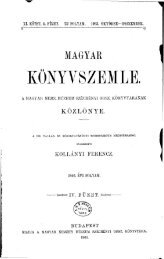
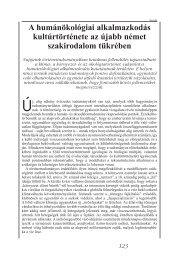
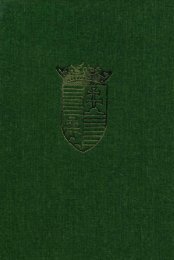
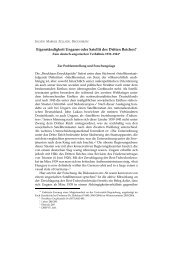
![Letöltés egy fájlban [36.8 MB - PDF] - EPA](https://img.yumpu.com/23369116/1/172x260/letoltes-egy-fajlban-368-mb-pdf-epa.jpg?quality=85)
